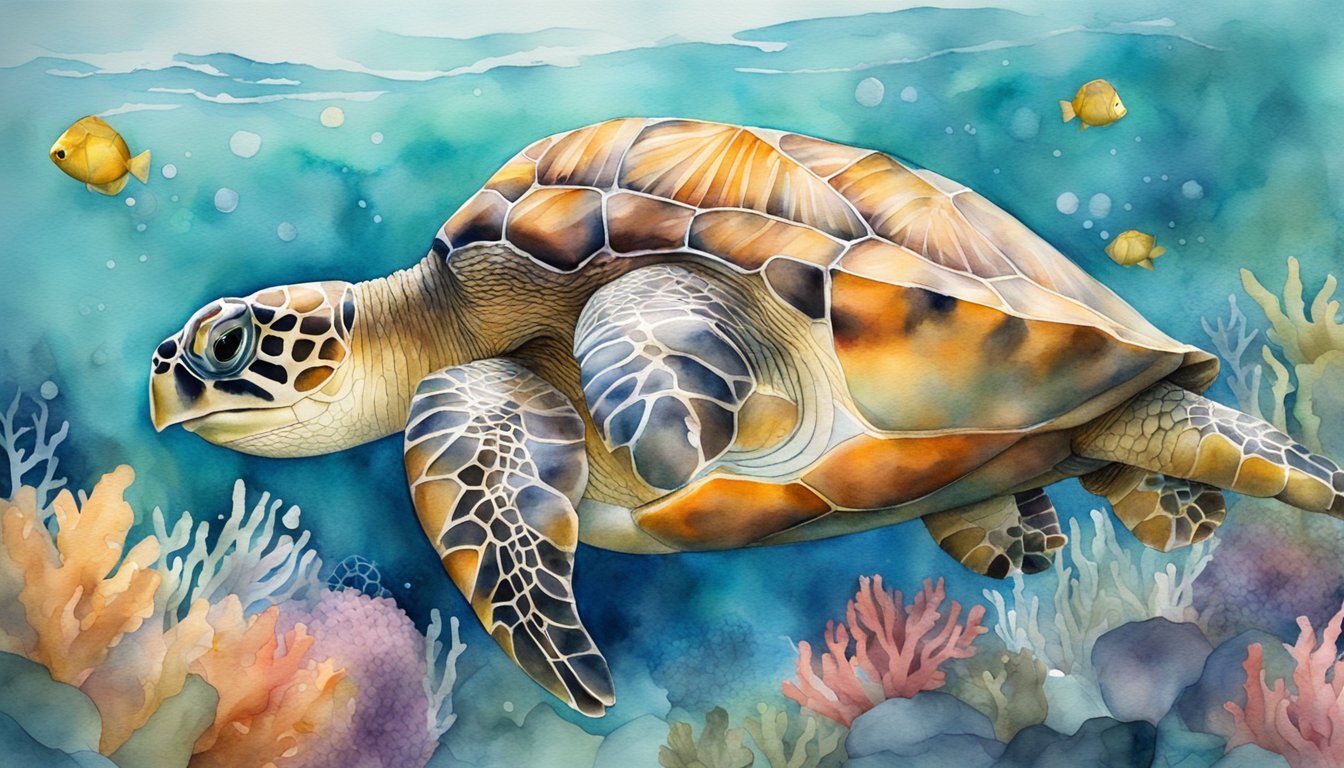Biology and Characteristics of Loggerhead Turtles
Loggerhead turtles, scientifically known as Caretta caretta, are robust reptiles with distinct adaptations suited to marine life. These turtles are notable for their strength, long life cycle, and wide-ranging habitats in the world’s oceans.
Physical Description
The loggerhead turtle boasts a broad, reddish-brown carapace and a paler plastron. Adults typically measure around 90 cm in shell length and can weigh as much as 135 kg. One of their most striking features is the large head with powerful jaws, enabling them to crack open hard-shelled prey like conchs and bivalves.
Life Cycle and Development
Loggerheads reach sexual maturity at about 35 years of age. Their lengthy development involves a complex life cycle that begins when females lay clutches of eggs in sandy nests on beaches. After incubation, hatchlings emerge and make their perilous journey to the sea, a critical time when many fall prey to predators.
Diet and Foraging Behavior
These turtles are primarily carnivores with diets centered on jellyfish, crabs, fish, and various other invertebrates. Loggerheads are adept at foraging in the ocean, using their strong jaws to feed on creatures often found in or near sargassum beds.
Habitat and Distribution
The loggerhead has an expansive range, living in the temperate, subtropical, and tropical regions of the Atlantic, Pacific, and Indian Oceans, as well as the Mediterranean Sea. These adaptable reptiles occupy a variety of oceanic environments, from open seas to coastal bays and estuaries.
Conservation and Threats to Survival

The loggerhead sea turtle is an enduring species facing severe threats from human activities and environmental changes. This section discusses the legal status protecting this species, the challenges it faces, and the ongoing efforts to ensure its survival.
Endangered Status and Legal Protection
The loggerhead sea turtle, with its scientific name Caretta caretta, is listed as “threatened” under the Endangered Species Act, highlighting its vulnerability to extinction. This designation mandates federal measures to safeguard their habitats and regulate activities that could harm their populations. International recognition of their conservation status is echoed through the IUCN Red List where they are listed as “vulnerable,” a step before “endangered.”
Major Threats and Human Impact
Various human-induced factors pose risks to loggerhead turtles, especially in nesting and foraging areas. Along the coasts of Florida, North Carolina, South Carolina, and Georgia, coastal development and artificial lighting disrupt traditional nesting habitats. Marine pollution, including debris, is another prominent issue, often leading to ingestion and entanglement. The threat is compounded by climate change, which can shift sand temperatures, affecting hatchling sex ratios. Furthermore, accidental capture, known as bycatch, in fishing gear, is a prevalent concern across their migratory paths, including the Gulf of Mexico and the Mediterranean.
Conservation Efforts and International Cooperation
Conservation efforts for the loggerhead turtle are diverse and multidimensional, ranging from legal protections and beach management to international treaties aimed at reducing bycatch. Organizations across countries where loggerheads are found, including Mexico, Oman, Mediterranean nations, and Australia, work in collaboration to monitor nesting sites and migrate paths during the breeding season to identify and mitigate threats. In addition, partnerships focus on reducing the impact of fisheries by promoting the use of turtle-excluder devices and altering fishing practices during nesting season.

